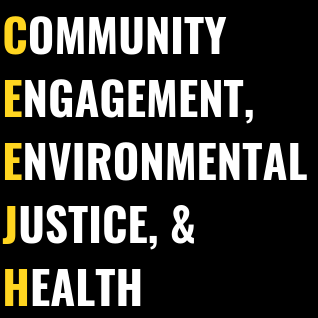Local Traffic is Choking Latinx Neighborhoods in Langley Park, MD
Langley Park, one of the communities that will be served by the incoming WMATA Purple Line, is a multicultural community composed of over 80% Latinxs with household incomes that are 83% lower than the rest of Prince George’s County. It is located within the Capital Beltway near a network of heavily trafficked roads. Emissions from industrial traffic and commuter traffic can impact air quality. Individuals who are exposed to traffic-related air pollution (TRAP) including particulate matter, volatile organic compounds (VOCs), nitrogen oxides, sulfur dioxide, and other pollutants can have adverse health outcomes including asthma, stroke, heart disease, and pre-mature mortality.
The overall goal of this project is to address gaps in knowledge about pollution levels in neighborhoods near heavily trafficked areas in Langley Park. Our research objectives include: 1) Explore the use of real-time sensors to measure particulate matter and noise levels in a community with heavily trafficked roadways; 2) Assess traffic related disparities through the use of US EPA’s EJSCREEN; and 3) Examine differences in particulate matter and noise levels during rush hour and non-rush hour time periods. We are currently using the Airbeam and the Aircasting system to perform real-time measurements of PM2.5 (µg/m3), temperature (℉), humidity (%), and sound levels (db). We also have used the US EPA’s EJSCREEN tool to map traffic-related hazards in the community and assess any traffic-related disparities compared to the rest of the state, region, and the US. This research provides a foundation to further explore the link between exposure to TRAP and health disparities in Langley Park, Maryland.
PhD Student Lucy Kavin (left) and CEEJH students who conducted local air monitoring throughout Langley Park.


